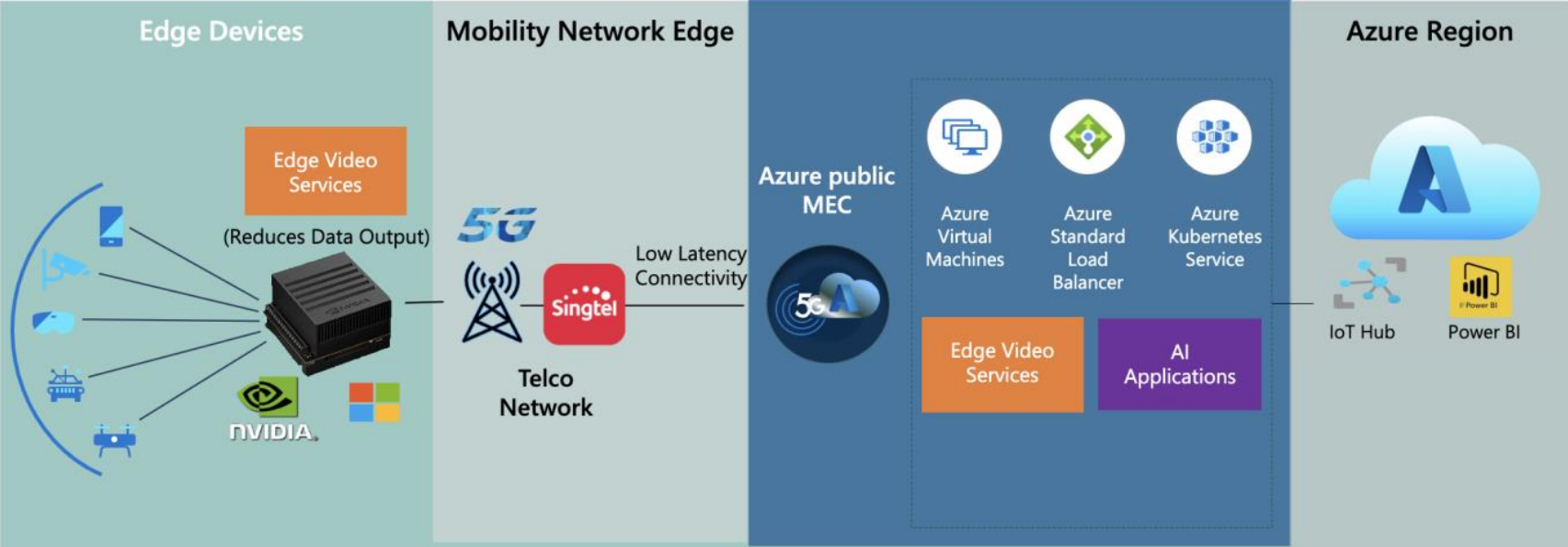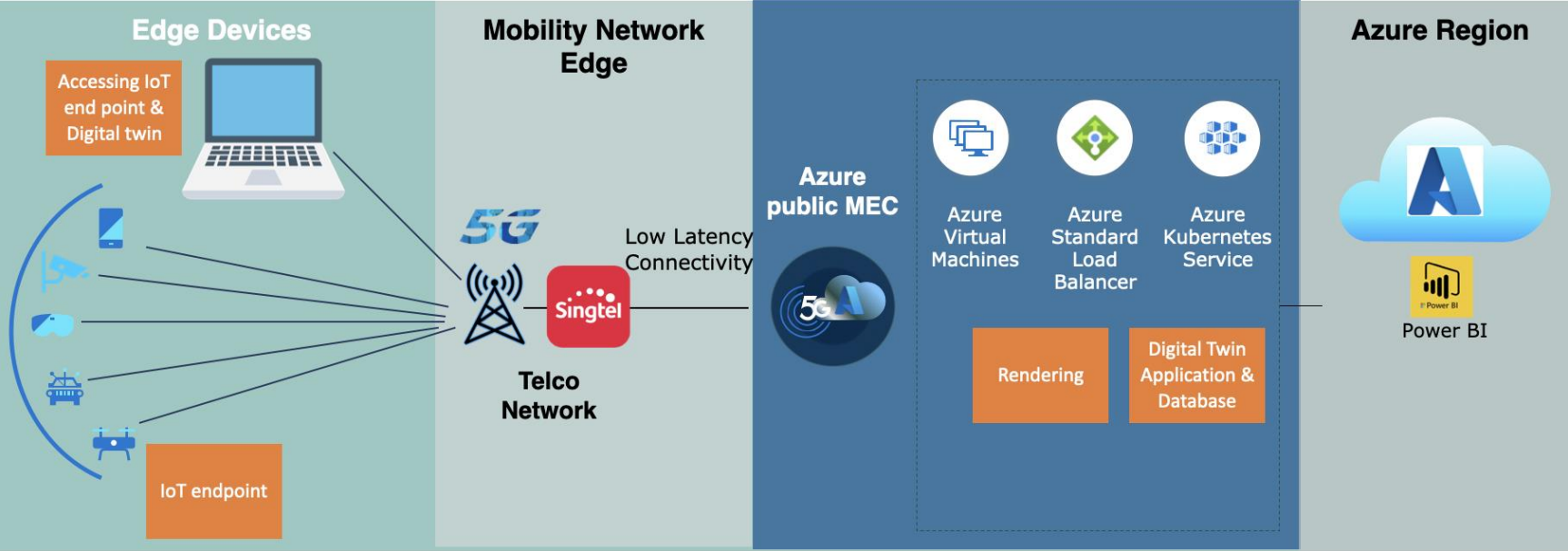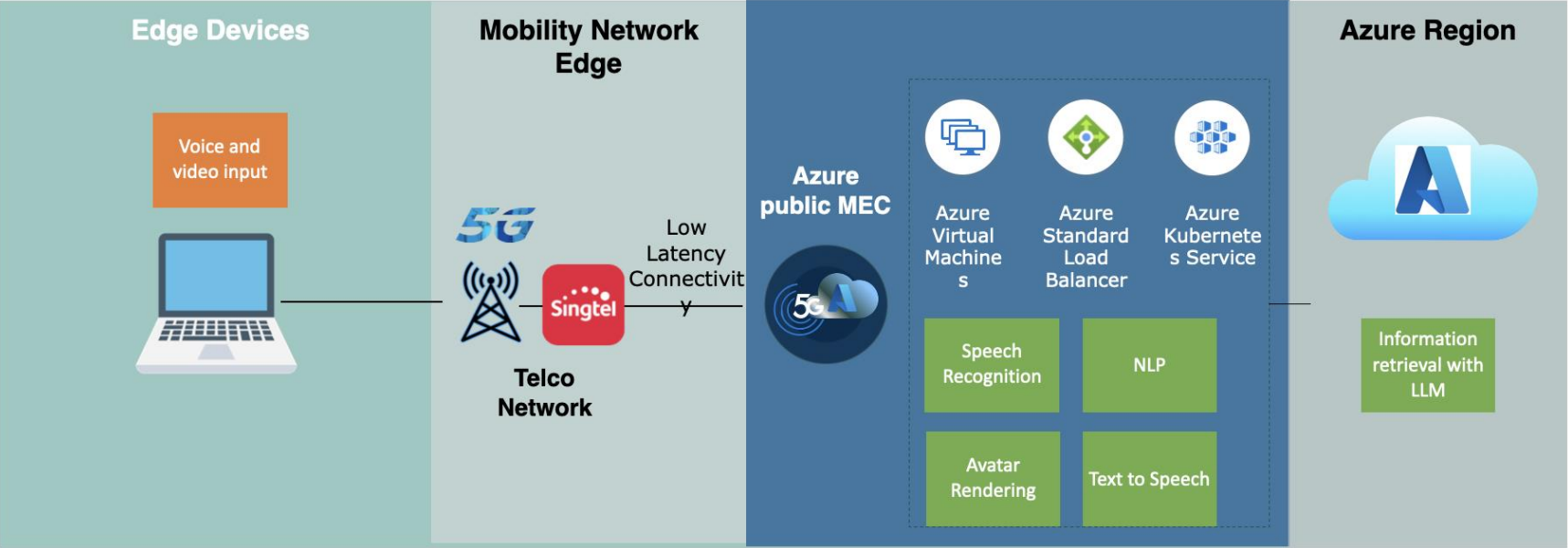Singtel unveils first commercial customer use case in Singapore and new technology solutions
Singapore, 11 May 2023 – Singtel today announced it is making the Azure public multi-access edge compute (MEC) available for all enterprises, unlocking opportunities to experience the advantages of edge computing and artificial intelligence (AI) accelerated by 5G. At the launch event, held at Microsoft’s Experience Centre Asia, Singtel also revealed its first commercial customer and the addition of partner solutions like large language modelling (LLM) to its 5G offerings.
Through this integration, National University Health System (NUHS) successfully trialled Singtel’s high-speed connectivity and low latency 5G network, Paragon and Microsoft Azure, including tools and applications to help surgeons leverage mixed reality technology to better visualise organs in high resolution 3D, and plan operating procedures. Plans are underway to roll out the solution commercially later this year.
Bill Chang, Chief Executive Officer, Group Enterprise, Singtel said, “We have been steadily building our public edge product ecosystem with our partners and have now expanded to include low latency AI capabilities at the edge that our customers will find useful in taking their business to the next level. With Singtel 5G and Paragon, and Microsoft Azure public MEC, customers can rapidly develop, test and deploy 5G applications such as autonomous guided vehicles, drones, immersive virtual reality and real time digital twin use cases. The solutions also provide distributed intelligence across different compute environments, like on-premises, edge and public cloud, enabling enterprises to make faster decisions and gain real-time data insights, ultimately transforming the way they operate and compete in the digital economy.”
Microsoft Azure public MEC and Azure Programmable Connectivity integrated with Singtel’s 5G
network and Paragon, the industry’s first-of-its-kind all-in-one platform for 5G networks, edge
computing and services orchestration, helps enterprises capitalise on 5G to explore high bandwidth and low latency use cases to transform operations in multiple sectors such as smart city, public safety, transportation, healthcare, and urban planning.
Yousef Khalidi, Corporate Vice President, Azure for Operators said, “Singapore is on the forefront of innovation as its enterprises and public sector embrace new technologies like 5G, AI, and security for its future. Our deep ecosystem collaboration with Singtel provides a unified compute solution from the cloud to the edge that will help organizations and developers build more Singapore-born innovation, as we empower every person and every organization on the planet to achieve more.”
By providing enterprises with fast, reliable, and secure connectivity, Azure public MEC enables data processing and storage to be moved closer to end-users, reducing latency and enhancing overall network performance. This will unlock new opportunities for customers to build and manage end-to-end use cases like digital twins, distributed compute video analytics solution and LLM.
One of first commercial customer use case and 5G-enabled solutions for enterprise trials
The NUHS’ Holomedicine programme will be one of the first commercial use cases to draw on the Azure public MEC technology with augmented reality for the healthcare sector. Singtel’s high-speed connectivity and low latency 5G network enables high-resolution images to be sent to Microsoft HoloLens, a mixed reality headset that is designed to help solve real business problems using intelligent apps. This technology will help surgeons to better visualise a patient’s organs in high-resolution 3D render without any disruption or lag.
The success of this trial demonstrates how doctors from NUHS can streamline the planning of surgical operations, improve patient education and safety, and create a more intuitive and immersive environment for surgical training and research with 5G.
Singtel also revealed three other solutions from local software partners, NVIDIA, Hiverlab and
Quantiphi, that demonstrate the application of 5G and Azure Public MEC to run advanced technology like augmented reality, AI, digital twins and more.
More details on these solutions can be found in the Annex.
To find out more about 5G for business, visit Singtel 5G Enterprise. Enterprises that are keen to co-create 5G solutions on the Azure Public MEC with Singtel can reach out to Singtel Business.
ANNEX
1. Distributed edge video solution
The distributed edge video solution, a collaborative effort between Singtel, Microsoft, and NVIDIA, to provide enterprises with 5G, compute and AI, is designed to improve workplace safety and monitoring in industries such as construction, manufacturing and more. Singtel’s 5G network provides low latency connectivity to the Azure public MEC and its Paragon platform manages compute across the Azure public MEC and Azure cloud. NVIDIA’s full stack accelerated computing platform including low-cost edge GPU appliance, enables the running of multiple AI/video analytics algorithms, while Microsoft’s compute infrastructure with Azure, Azure public MEC and the EVS solution allow for the distribution of video analytics solutions across different environments.
By leveraging the benefits of distributed intelligence across different compute environments, the
solution can detect low latency scenarios and alert personnel to prevent accidents. For example, the system uses an on-premise appliance on a forklift to detect motion and avoid collisions, while the Azure public MEC provides additional business logic by using cameras to detect possible collisions with people and other forklifts. Video footage and incident reporting are stored in the public cloud for easy access.
The benefits of this solution include support for low latency applications with mission-critical outcomes, the ability to leverage existing enterprise applications sitting in the cloud for cost economics, and distribution of logic into the edge for faster response with coordination from a central public cloud infrastructure.
2. Digital Twins with 5G and Azure public MEC
Using Hiverlab’s digital twin solution, Singtel 5G and Azure public MEC, a digital representation of a physical environment, or digital twin, is created to support public safety and surveillance, smart campus, factories, port and airport operations. This solution enables improved safety, quick identification and resolution of incidents, remote fixes, and better coordination of resources including field force and fleets. The digital twin application runs on the Azure public MEC providing quick real time rendering of digital representation to the edge. Users will be able to use the digital twin to have end to end view of their operations and discover/drill down into individual IoT devices/endpoints to identify issues with an intuitive interface.
Singtel’s 5G provides high speed connectivity to Azure public MEC, and its Paragon platform manages compute across Azure public MEC and Azure cloud, while providing a low latency rendering infrastructure to host the digital twin application. Hiverlab offers accurate 3D rendering of customer infrastructure, integrates sensor information, and 3D scanning and mapping of infrastructure for a complete digital representation.
With a digital representation of existing infrastructure and a sensor-augmented dashboard that provides constant feedback, customers have end-to-end visibility of their operations. They can also zoom in and out of specific locations for more information.
3. Large language model – “Generative AI” over 5G and Azure public MEC
Singtel has partnered with Quantiphi, an AI-first digital engineering platforms and services company, to showcase a “Conversational 3D Avatar” powered by LLM over 5G and Azure public MEC that can support various industries such as field support, digital concierge, robot assistant, help desk, operation support and knowledge kiosk.
Singtel’s high-speed connection with low latency reduces response time while the Azure public MEC provides high-capacity compute and GPUs to process both speech and response. The LLM is trained on NVIDIA’s GPUs and frameworks running on Microsoft Azure, while Quantiphi is responsible for training the LLM for the specific vertical and domain, as well as creating a 3D Avatar for more natural interactions with the system.
The solution aims to help individuals improve their productivity by harnessing both a front-end interface such as a digital avatar, and AI to process large volumes of information and present it in a meaningful and personalised manner. The current model is trained to respond to topics related to MEC, 5G, Paragon, and 5G use cases. Audience may ask a variety of questions related to the importance, value propositions and services offered within the Azure public MEC.
It can be used as a sales enablement or outreach tool as it enables better knowledge management and access to information, leading to improved productivity and customer satisfaction.




